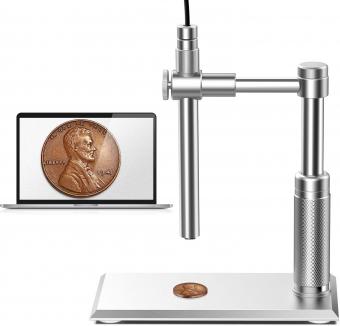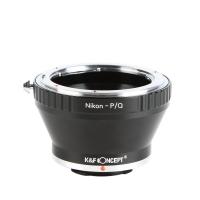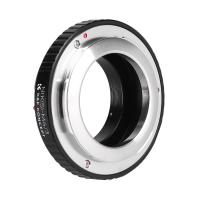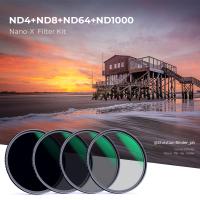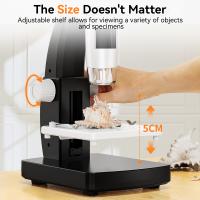Microscope That Can See Sperm?
A microscope that can see sperm is called a sperm microscope or a semen analysis microscope. These microscopes are designed to magnify the sample of semen to a level where the sperm cells can be seen and analyzed. The magnification level of these microscopes is typically between 200x and 400x, which allows for a detailed examination of the sperm cells' morphology, motility, and concentration. Sperm microscopes are commonly used in fertility clinics and laboratories to assess male fertility and diagnose any potential issues with sperm quality or quantity. They are also used in research studies to investigate the effects of various factors on sperm health and function. Overall, a sperm microscope is an essential tool for understanding male reproductive health and fertility.
1、 Sperm morphology

A microscope that can see sperm is an essential tool in the field of reproductive medicine. It allows clinicians and researchers to examine the size, shape, and movement of sperm, which are critical factors in male fertility. Sperm morphology, or the study of sperm shape and structure, is an important aspect of male fertility evaluation. Abnormalities in sperm morphology can indicate underlying health issues or genetic abnormalities that may affect fertility.
Recent advances in microscopy technology have led to the development of high-resolution imaging techniques that can provide detailed information about sperm morphology. For example, digital holographic microscopy (DHM) is a non-invasive imaging technique that can capture three-dimensional images of live sperm in real-time. This technology allows researchers to study the movement and behavior of sperm in a more natural environment, which can provide valuable insights into male fertility.
Another recent development in the field of sperm morphology is the use of artificial intelligence (AI) to analyze sperm images. AI algorithms can quickly and accurately identify abnormalities in sperm morphology, which can help clinicians make more informed decisions about fertility treatments.
Overall, a microscope that can see sperm is an essential tool in the field of reproductive medicine. Advances in microscopy technology and AI are helping to improve our understanding of sperm morphology and male fertility, which can ultimately lead to better outcomes for couples struggling with infertility.
2、 Sperm motility

A microscope that can see sperm is an essential tool in the field of reproductive medicine. It allows scientists and clinicians to observe the morphology and motility of sperm, which are crucial factors in male fertility. Sperm motility refers to the ability of sperm to move and swim towards the egg for fertilization. A microscope that can see sperm can help determine the percentage of motile sperm in a semen sample, which is an important indicator of male fertility.
Recent advancements in microscopy technology have led to the development of high-resolution microscopes that can provide detailed images of sperm. These microscopes use advanced imaging techniques such as phase-contrast microscopy, dark-field microscopy, and fluorescence microscopy to visualize sperm in real-time. They can also capture high-speed videos of sperm movement, which can be analyzed to determine the velocity and trajectory of sperm.
In addition to observing sperm motility, a microscope that can see sperm can also be used to assess sperm morphology. Abnormalities in sperm shape and size can affect their ability to fertilize an egg. By examining sperm under a microscope, clinicians can identify any abnormalities and determine the best course of treatment for male infertility.
Overall, a microscope that can see sperm is an essential tool in the diagnosis and treatment of male infertility. With the latest advancements in microscopy technology, scientists and clinicians can obtain detailed information about sperm morphology and motility, which can help improve the success rates of fertility treatments.
3、 Sperm count

A microscope that can see sperm is an essential tool in assessing male fertility. Sperm count, or the number of sperm present in a semen sample, is a crucial factor in determining male fertility. A low sperm count can make it difficult for a couple to conceive naturally. A microscope that can see sperm allows doctors to count the number of sperm present in a semen sample accurately.
In recent years, there has been a growing concern about declining sperm counts in men worldwide. Studies have shown that sperm counts have decreased by almost 60% in the last four decades. This decline has been attributed to various factors, including environmental pollution, lifestyle changes, and exposure to chemicals.
The use of a microscope that can see sperm has helped researchers to study the quality and quantity of sperm in detail. This has led to the development of new techniques and treatments to improve male fertility. For example, intracytoplasmic sperm injection (ICSI) is a technique that involves injecting a single sperm directly into an egg to achieve fertilization. This technique has been successful in treating male infertility caused by low sperm count.
In conclusion, a microscope that can see sperm is an essential tool in assessing male fertility. It allows doctors to accurately count the number of sperm present in a semen sample and study their quality in detail. The use of this tool has led to the development of new techniques and treatments to improve male fertility. However, the declining sperm counts in men worldwide remain a cause for concern, and further research is needed to understand the underlying causes and develop effective solutions.
4、 Sperm viability

A microscope that can see sperm is an essential tool in assessing sperm viability. Sperm viability refers to the ability of sperm to fertilize an egg successfully. The microscope allows scientists to observe the sperm's motility, morphology, and concentration, which are all critical factors in determining its viability.
Recent advancements in microscopy technology have made it possible to observe sperm in greater detail than ever before. For example, high-resolution microscopy techniques such as confocal microscopy and two-photon microscopy have enabled scientists to study the intricate structures of sperm cells in three dimensions. These techniques have also allowed researchers to observe the behavior of individual sperm cells in real-time, providing valuable insights into their motility and behavior.
In addition to traditional microscopy techniques, new technologies such as microfluidics and lab-on-a-chip devices are being developed to improve the accuracy and efficiency of sperm viability testing. These devices allow scientists to analyze sperm samples in a controlled environment, providing more accurate and reproducible results.
Overall, the microscope that can see sperm remains an essential tool in assessing sperm viability. With the latest advancements in microscopy technology, scientists can now observe sperm in greater detail than ever before, providing valuable insights into their behavior and viability.






